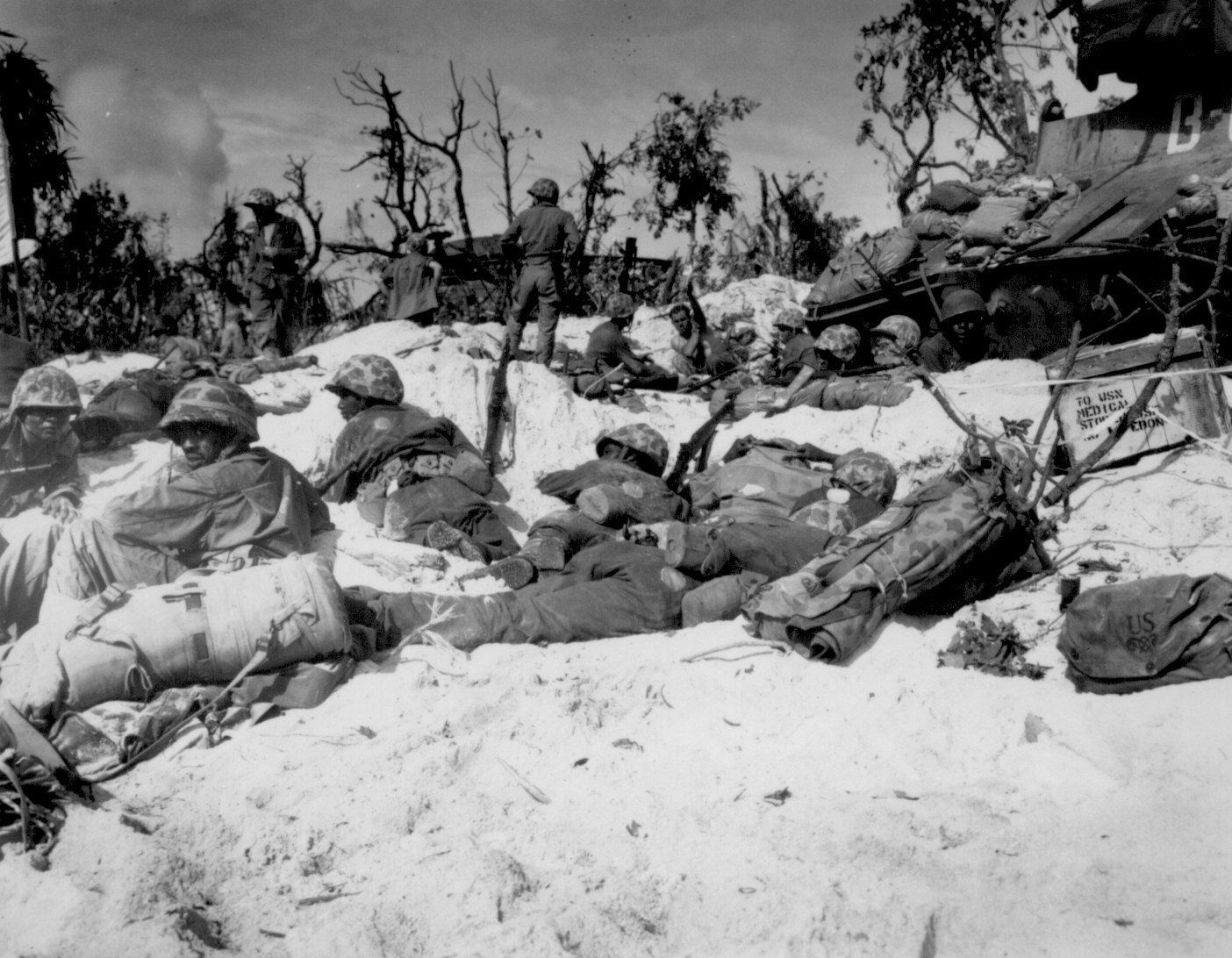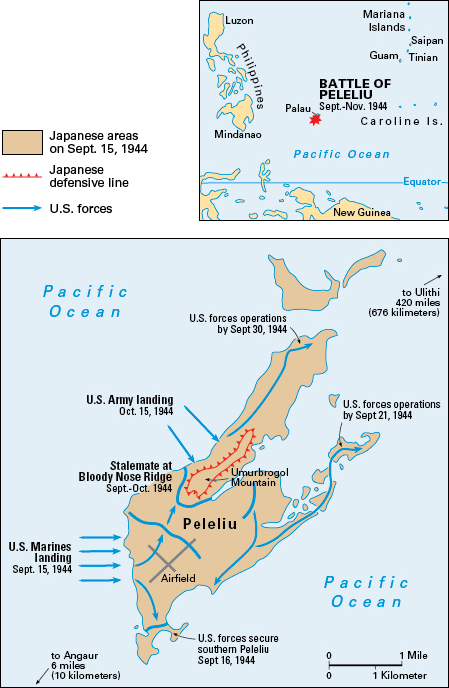Peleliu, Battle of, was fought between Japanese and United States forces during World War II (1939-1945). The battle lasted from September to November 1944 and ended in a U.S. victory. Peleliu, a small island in the Western Pacific Ocean, today is part of the country of Palau. It lies about 600 miles (970 kilometers) east of the Philippine Islands. Peleliu covers just 5 square miles (13 square kilometers), but its location made it important to both Japanese and U.S. forces. The fight for Peleliu resulted in the highest U.S. casualty rate (percentage of soldiers killed and wounded) of any amphibious invasion in the Pacific.

Background.
From 1942 into 1944, U.S. forces in the Pacific won a series of hard-fought victories over Japan. A string of battles took the Americans through New Guinea and the Gilbert, Marshall, and Mariana islands. The Americans planned to liberate the Philippines, which the Japanese had invaded in 1941.
In September 1944, Japanese forces in the Palau islands—between the Marianas and the Philippines—threatened the mounting U.S. invasion of the Philippines. The Americans aimed to reduce the threat by capturing Peleliu, as well as the nearby islands of Angaur and Ulithi. The plan was called Operation Stalemate II.
An American force of aviators, sailors, and some 28,000 troops delivered the attack on Peleliu. About 11,000 Japanese troops defended the island.

The battle.
On September 15, U.S. Marines reached the southwest beaches of Peleliu against fierce enemy fire. Casualties were heavy, and troops who made it to shore clung desperately to a thin beachhead (foothold). Water supplies ran low as temperatures reached 115 °F (46 °C). Despite stiff resistance, the Marines took Peleliu’s airfield and the south tip of the island. The airfield’s capture allowed U.S. warplanes to rearm and refuel just behind the front lines.
Bloody combat raged as U.S. troops tried to drive the Japanese from coral ridges north of the airfield. The Japanese defense centered on Umurbrogol Mountain, a complex of coral ridges and canyons called “Bloody Nose Ridge” by U.S. troops. As assaults and counterattacks dragged into October, U.S. Army troops reinforced and replaced the exhausted Marines. Enemy resistance in the ridges continued late into November, when U.S. troops finally secured the island.

At many earlier Pacific battles, Japanese troops had used suicidal charges, called banzai attacks, with little success. But at Peleliu, the Japanese used different methods. They fortified rings of caves, narrow paths, and steep ridges. They fought from hidden positions, inflicting great damage before U.S. troops could root them out. The methods used at Peleliu were repeated—again with terrible U.S. casualties—at the 1945 battles of Iwo Jima (now Iwo To) and Okinawa.
Aftermath.
The capture of tiny Peleliu—and tinier Angaur—cost the lives of almost 2,000 U.S. troops, with nearly 8,000 wounded. The casualty rate was close to 40 percent. Of the nearly 11,000 Japanese troops on Peleliu, just 19 combat soldiers chose surrender over death. A few hundred laborers, mostly Koreans, also surrendered. Another 2,600 Japanese died in the fight for Angaur. Despite Peleliu’s potential importance, the island was little used after its capture.
See also World War II (Island hopping in the Central Pacific) .
